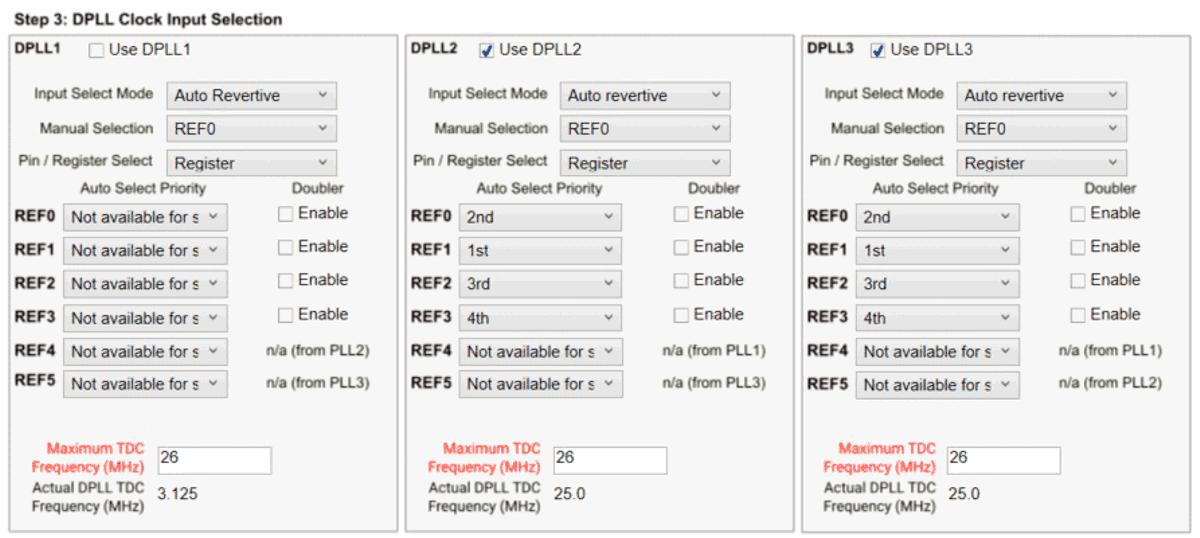SNAU296 December 2023 LMK5C33414A
- 1
- Abstract
- Trademarks
- 1Introduction
- 2EVM Quick Start
- 3EVM Configuration
-
4EVM
Schematics
- 4.1 Power Supply Schematic
- 4.2 Alternative Power Supply Schematic
- 4.3 Power Distribution Schematic
- 4.4 LMK5C33414A and Input References IN0 to IN3 Schematic
- 4.5 Clock Outputs OUT0 to OUT3 Schematic
- 4.6 Clock Outputs OUT4 to OUT9 Schematic
- 4.7 Clock Outputs OUT10 to OUT13 and Clock Inputs IN2 and IN3 Schematic
- 4.8 XO Schematic
- 4.9 Logic I/O Interfaces Schematic
- 4.10 USB2ANY Schematic
- 5EVM Bill of Materials
-
6Appendix A - TICS Pro LMK5C33414A Software
- 6.1 Using the Start Page
- 6.2 Using the Status Page
- 6.3 Using the Input Page
- 6.4 Using APLL1, APLL2, and APLL3 Pages
- 6.5 Using the DPLL1, DPLL2, and DPLL3 Pages
- 6.6 Using the Validation Page
- 6.7 Using the GPIO Page
- 6.8 SYNC/SYSREF/1-PPS Page
- 6.9 Using the Outputs Page
- 6.10 EEPROM Page
- 6.11 Design Report Page
6.1.3 Step 3
Set the clock input select mode for the DPLLs, input priority, and maximum TDC frequency. The recommended Input Select Mode is Auto Revertive. REF0, REF1, REF2, and REF3 shown below correspond with IN0, IN1, IN2, and IN3, respectively. REF4 and REF5 priorities can be set if the DPLLs input is fed from one of the APLL post divider frequencies. The corresponding APLL is listed next to the REF4 and REF5. The REF with the highest priority is fed as the DPLL input.
 Figure 6-3 Step 3: DPLL Clock Input Selection
Figure 6-3 Step 3: DPLL Clock Input Selection